Your Planets
Portraits of the Planets
Aspects between Planets
The planetary ages
The planetary families
Planets in Signs
The Planets in comics


The nature of astrological effects is primarily conjectural, stochastic and chaotic. There is therefore no mechanical astrological determinism of which a statistical study could show, and not demonstrate, the probability or the improbability. This fact has not stopped supporters and opponents of astrology from indulging in it for better (rarely) and worse (almost always). However, serious statistical studies could highlight and detect some of the most salient and therefore most visible astrological effects. But these have never been made, although all the elements are in place for them to be made. For daring researchers, a vast unknown territory therefore remains to be explored, knowing that it would be limited to the tip of the astrological iceberg, of which around 90%, by spinning this icy metaphor, would therefore remain beyond the reach of any statistics…
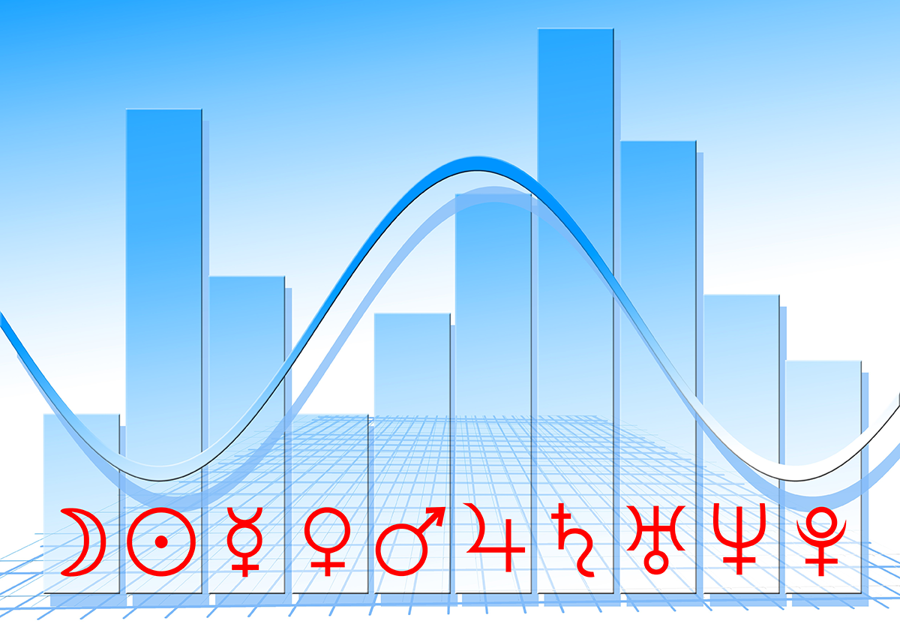
“You can’t force people to like what they hate (here, astrology), you can’t even force them — and you shouldn’t force them — to learn about it. But our scientists, our rational and objective scientists, only express their likes and dislikes. They act as if they have arguments and use their considerable authority to give them weight. But the arguments they actually use demonstrate their pitiful lack of culture…” (Paul Feyerabend, epistemo-anarchist historian of science, Dialogues sur la connaissance, Threshold 1996).
The following text documents and criticizes the main serious statistical studies devoted to astrology among the hundreds that have been carried out during the 20th century and at the beginning of the 21st. It therefore does not claim to be exhaustive.
These statistics relate either to the traditional astrological knowledge itself, or to the validity and reliability of the judgments of the astrologers who put it into practice. The distinction is important: we do not judge the reality, relevance and value of knowledge by the performance of its actors. To take an example, no serious scientist would have the crazy idea of doing statistics on physicists or biologists to confirm or invalidate a hypothesis about physics or biology. It is the same for astrology, except (and the distinction is also essential) that physics and biology are sciences “hard”, which astrological knowledge is not.
Add to this that the field of scientific knowledge is sufficiently unified and delimited so that its protagonists share a similar conception, which is very far from being the case among actors of astrological knowledge, divided into multiple schools of thought conveying often contradictory and mostly fanciful visions of this knowledge. Finally, it should be noted that any ignoramus can claim to be competent in astrology, which is not the case for scientists, who can only be considered as such after a rigorous university course leading to on diplomas attesting to their intellectual abilities and acquired skills. As a result, the actors of the different sciences share the same language and the same cognitive baggage to describe the same reality considered accessible to rationality, while the astrologers taken as a whole do not agree on the words or the things. and most often bathed in the irrational. Astrologers are therefore generally unreliable.
▶ It is therefore deliberately that the numerous statistical experiments relating to the performance of astrologers have been left aside here. The only exception to this rule: Carlson’s experiment, because it was directly related to Gauquelin statistics and because it is an example of pseudoskeptical cheating. So that there is no ambiguity in this choice, it should be noted that those who have been tested in this way, probably very representative of the majority of practitioners, have obtained deplorable results. These almost systematic failures have causes that are both internal and external to astrological knowledge. On the internal side, let us mention the lack of unity and coherence of an astrological knowledge frozen for centuries in a dogmatic and fatalistic vision and crumbled into multiple often contradictory tendencies, as well as irrationalism, ignorance and the incompetence of most of its self-proclaimed representatives. On the external side, it should be noted that the statistical tests used are not adapted to the specificity and complexity of astrological knowledge. Be that as it may, the proven statistical underperformance of these astrologers in no way prejudges the validity or invalidity of this knowledge, which are independent of their disastrous services.
▶ It is just as deliberately that statistics relating, for example, to the predictions of individual or collective events have been set aside here, horary astrology, financial astrology, or geophysical and lunar effects. They all produced consistently negative results. These show that astro-fatalism is a chimera and that the astrological effects are part of a still unknown physics.
▶ We have retained here only the statistical control of the astro-psychological assertions concerning the hypothetical influences of the Signs and the planets. The largest and most important experiment was that carried out by researchers Michel and Françoise Gauquelin in the second half of the 20th century. It validated some of the traditional astrological assertions and invalidated most, and is related in detail. The checks carried out by various anti-astrologer committees have confirmed, with very bad grace as we will see, the results of this study. This was also checked by the psychologist and statistician Suitbert Ertel and by the ex-astrologer and statistician Geoffrey Dean, who are the two main actors in the multiple counter-expertise of the Gauquelin statistics. We will relate and criticize in detail their work, and especially the anti-astrologer study carried out by Geoffrey Dean on temporal twins. The phenomenon of “astrological twins” is indeed a major stumbling block whose importance cannot be overlooked. For this reason, mention has also been made of the pro-astrological study that the biologist Suzel Fuzeau-Bræsch has devoted to this phenomenon.
▶ The last part of this document is devoted to a critical examination of these various statistics and the counter-investigations to which they gave rise, in the light of a contemporary and non-fatalistic conception of astrology, that is to say conditionalist. Finally, we find in the appendix a study on the system of Houses imposed by Ptolemy in his Tetrabiblos, which explains the reason for the discrepancy between the key sectors of Gauquelin’s statistics and those advocated by Ptolemy and the tradition that claims to be his.
A statistical study proves nothing, and even less when what it claims to measure and quantify is an object that it isolates from the complex network of variables in which it is located and which are far from all known and predictable. Deprived by its very status of demonstrative virtue, no statistics can therefore affirm or invalidate the existence of zodiaco-planetary influences on the human species. And this for a simple reason: the nature of astrological effects is above all conjectural, stochastic and chaotic. There is therefore no mechanical astrological determinism of which a statistical study could show, and not demonstrate, the probability or the improbability. This fact has not stopped supporters and opponents of astrology from indulging in it for better (rarely) and worse (almost always).
However, serious statistical studies could highlight and detect some of the most salient and therefore most visible astrological effects. But these have never been made, although all the elements are in place for them to be made. For daring researchers, a vast unknown territory therefore remains to be explored, knowing that it would be limited to the tip of the astrological iceberg, of which around 90%, by spinning this icy metaphor, would therefore remain beyond the reach of any statistics…
It would still be necessary that these adventurous researchers exist. For the record, through an astrophysicist open to astrology, during the 1990s I was put in contact with one of his friends who ran the laboratory of experimental psychology of an important faculty from the south of France and who said he was ready to carry out this kind of experiment. This until the moment when I gave him a protocol which he quickly understood that there was a strong risk of validating the astrological fact; he then immediately backed down, probably out of fear for his reputation and career. This fearful and lamentable evasion put an end to his friendship with the astrophysicist in question. It is true that it is very frowned upon to have a a priori favorable to astrology in university circles and that it takes a lot of courage, even recklessness to dare to take this path forbidden by official knowledge.
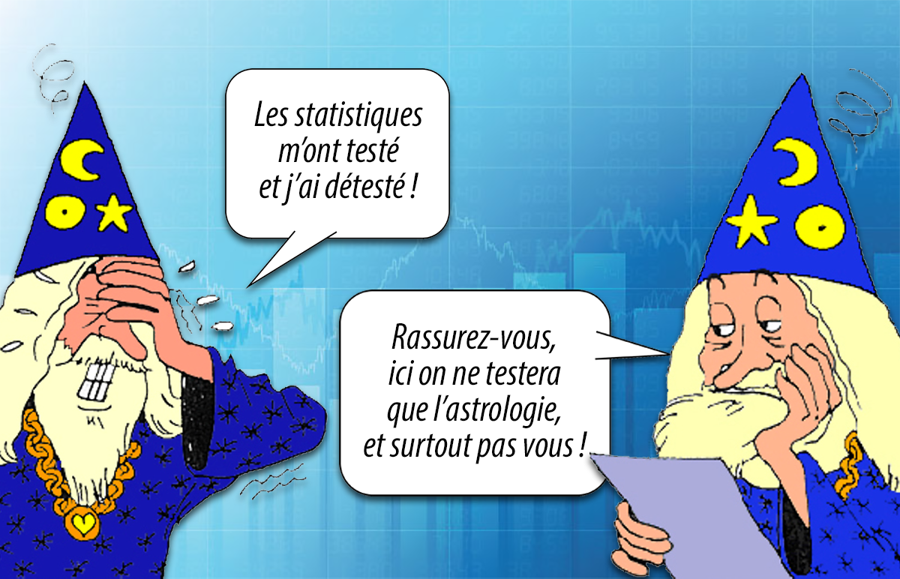
“Statistics are like the bikini. What they reveal is suggestive, but what they hide is vital” (Aaron Levenstein, economist & statistician).
“Statistics make you think of things you would never have imagined otherwise” (Keith Ridgway, writer).
“Statistics have shown that mortality in the army increases significantly in times of war” (Alphonse Allais, absurdist writer).
“Facts are stubborn. It’s easier to deal with statistics” (Mark Twain, pamphleteer writer).
“The number, often peremptory, tends more and more to replace the argument. It is simple. And above all, it gives the feeling or the illusion that you are in control of what you are talking about” (Le Grand Truquage, op. coll. of statisticians).
“If statistics now start to prove astrology, then I no longer believe in statistics” (Jean Rostand, biologist & academician).
In his peremptory sentence, the rationalist academician and scientist Jean Rostand connects two major blunders. The first is to assign the statistic a probative value ; but it proves nothing. The second is to make her a object of belief ; yet the act of believing is incompatible with the critical spirit characteristic of “free-thinking” of which he was a follower. The term “free-thinking” having been forged in 1850 by Victor Hugo, who was also a follower of spiritualism, Did Jean Rostand believe that statistical tables were rotating? It is true that this moralist also affirmed that “Science made us gods, even before we deserved to be men”. We thus better understand why astro-statistics made it come out of its hinges, which were very poorly sealed.
The statistics, which is based on the collection of data in order to infer general laws allowing forecasting, is as old as astrology. The very first known writings are Sumerian, date from −3500 and are mostly censuses concerning livestock, agriculture and trade… but also data relating to the positions of celestial bodies in order to predict their movements. It is the observation of the sky in correlation with that of human behavior that enabled the precursors priests-astrologers-astronomers, by collecting a great deal of data over the millennia and interpreting them, to determine which particular influences they could attribute to rightly or wrongly to the stars and the signs of the zodiac. In doing so, they did not know that they were doing statistics, since the latter, as a specific science of the mathematical treatment of numerous data, had not yet been invented. Their reasoning was nevertheless based intuitively on calculations of frequencies and probabilities.

“Since time immemorial, under their almost perpetually limpid Eastern sky, where all these golden jewels sparkled with all their fires for entire nights, these people (the Mesopotamians) had been fascinated by the stars, of which they had centuries and centuries, observed, recorded and studied without respite the presentations and the rhythms. Not only the multitude of fixed stars and their constellations, from which they ended up, in the middle of the first millennium before our era, by drawing a zodiacal sequence, but the great lampposts of Day and Night, the Sun, especially the Moon, who ruled their calendar; and the Planets, finally: Venus, which they called Ishtar, from the name of the patron goddess of Love; Jupiter, the White Star; Mercury, the Mouflon; Mars, the Inflamed and Saturn, the Constant, whose risings, paths, absences and eclipses they could predict without fail. It is not surprising that they saw there the most brilliant pictograms, drawn, up there, by the gods to publish their decisions.” (Jean Bottero, The oldest religion in Mesopotamia).
It was only in the 18th century that the word “statistics” appears for the first time. It would have been coined from the German word “Staatskunde”, which basically means “civil studies” (political & social sciences). The scholars of this century say of “Enlightenment” and who is also the one who sees the advent in the sphere of knowledge of the triumphant rationalism and its shadows, sought to relegate astrology to the museum of superstitious and irrational divinatory practices. This did not prevent one of them, the mathematician Antoine Deparcieux, to carry out the same data collection as astrologers, but according to more systematic and rational methods to… try to predict the date of the most probable death of his contemporaries. In fact the “Enlightenment”, who were not only rationalists but also eminently mercantile, also saw the birth of the first life insurance companies, whose owners and shareholders had the greatest interest in knowing when their customers were going to die, which was not a novelty in this field. They did so to L’Essai sur les probabilités de la durée de vie humaine, written in 1746 by Antoine Deparcieux, the founding text of statistical science.
Statistics is at the same time a science, a method and a set of mathematical techniques whose object is the study of a phenomenon by the collection of data, objective, codified, fixed and transmissible information relating to objects or events. characteristics of this phenomenon. These data are subject to analysis, processing and interpretation of the results of their statistical study. Statistics is based on two distinct concepts which are both positive quantifications of a mass-unit of data: that of “frequency” And the one of “probability”. The frequency denotes a proportion of observations, while the probability measures the degree of uncertainty of the occurrence of an event.
To understand the difference between frequency and probability, let’s take an example… astrological of course. This example refers directly to the assumptions and the method on which the statistical work carried out by Michel and Francoise Gauquelin between 1955 and 1990.
These presuppositions were as follows: since astrology assigns to each Planet and to each Sign a precise influence which determines a characteristic psychological profile, there could be a correlation between these individual astrological profiles and the professional successes of large groups of people exercising the same profession. Indeed, we can conjecture that the people who are most successful in their profession are those whose major psychological characteristics are the most similar to the qualities required to be the most successful in their field of activity. As for the method, it consisted in isolating an element (Planet, Sign, House or Aspect) to statistically verify whether or not it matched the astrological assertions.
Presupposition: according to astrological assertions, the planet Jupiter would grant a certain sense of spectacle and an extroverted temperament, and this planet would be particularly valued when it is close to the horizon or meridian of a natal horoscope. But the profession of actor is based on the same qualities. It is therefore sufficient to calculate the positions of Jupiter in the local sphere of the horoscopes of a large number of actors to verify whether or not these astrological assertions are corroborated by statistical results.
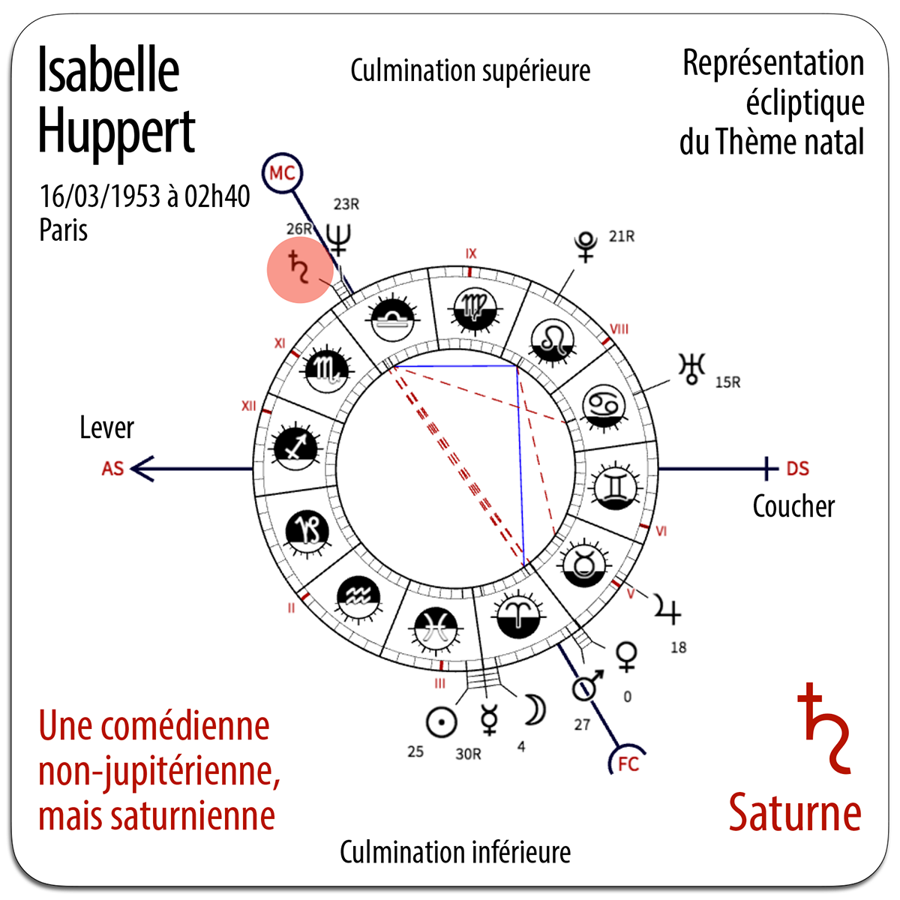
Method: i.e. a population of 100 little-known actors among whom 10 present a angularity (presence at sunrise, sunset & upper and lower culminations) of Jupiter. The proven frequency of this position is 10/100 = 10%. If we draw lots (that is to say at random) one of these actors, the probability of falling on a “jupiterian” is therefore 10/100 = 10%. In the case of frequency, it is 100% certain that 10% of the members of the group are “jupiterian”; in the case of probability, it is possible that the actor drawn at random is not, even if there is a probability that he is. The larger the population, the greater the probability of drawing lots for one of its members corresponding to the observed frequency.
We can repeat the same experiment by choosing this time a group of 100 very well-known actors, of whom we realize that 20 present an angularity of Jupiter. This frequency of 20% measured becomes, by drawing lots from one of them, a probability of 20% of falling on a “jupiterian”. This change from 10% to 20% probability depending on whether the two populations are composed, one of little-known actors and the other of very well-known actors, challenges the statistician and encourages him to wonder if there is not an objective correlation between the respective frequencies of the angularities of Jupiter in one and the other group.
To verify this, we can repeat this experiment with two other groups of little known and very well known actors. If we obtain substantially the same results as in the first experiment, we will suspect the possibility of a significant correlation. If, on the contrary, we obtain very different results (e.g. 20% of actors “jupiterian” little known and 10% very well known), we will wonder if the apparent correlation observed during the first experiment was not the result of chance or of a demographic bias that had not been taken into account and that it will have to be integrated into the calculations before starting these experiments again.
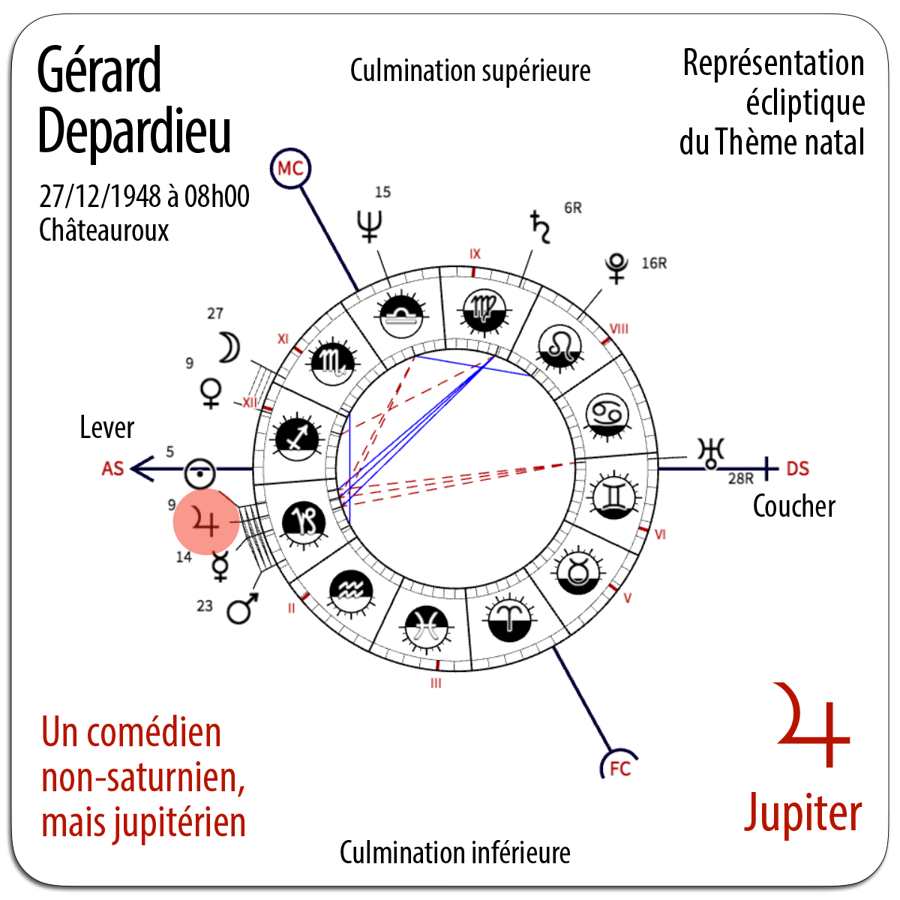
If we repeat the same experiment a third time, this time on a group of 100 people taken at random, 10% of whom have a jupiterian angularity in their horoscope, we will deduce that there is a significant correlation between the facts of being a guy lambda and a little-known comedian, since the probability of falling on a “jupiterian” by drawing lots is identical in the two populations: 10%… which means that for little-known actors, the positions of Jupiter in the local sphere depend on the laws of chance. On the other hand, the statistician will wonder about the 20% probability of finding a “jupiterian” by drawing lots from the group of well-known actors: would there be a significant positive correlation that would justify this deviation from the average defined by the group of 100 people taken at random? To verify this, he only has to repeat these experiments on other groups selected for example according to the criterion of age, to avoid biases due to astronomical frequencies (at certain times, it is more frequent to observe angularities of Jupiter).
If this multitude of repeated experiments always leads to substantially the same results, the statistician will be able to infer that there is probably a positive correlation between the angularities of Jupiter and the fact of being a very well-known comedian: he will then have established a statistical fact. Since Jupiter’s positions in the local sphere are obviously randomly distributed for little-known actors as well as for groups made up of individuals chosen at random, he will logically deduce that the correlation to be explored is not between Jupiter’s angularities and the profession of actor, but between jupiterian angularity and the fact of being a known and recognized actor.
There is another possibility: that the frequency distribution of Jupiter in the local sphere is always due to chance regardless of the experimental group. In this case, the statistician is justified in asserting that, from his point of view, there is no positive correlation between Jupiter and the profession of known or unknown actor.
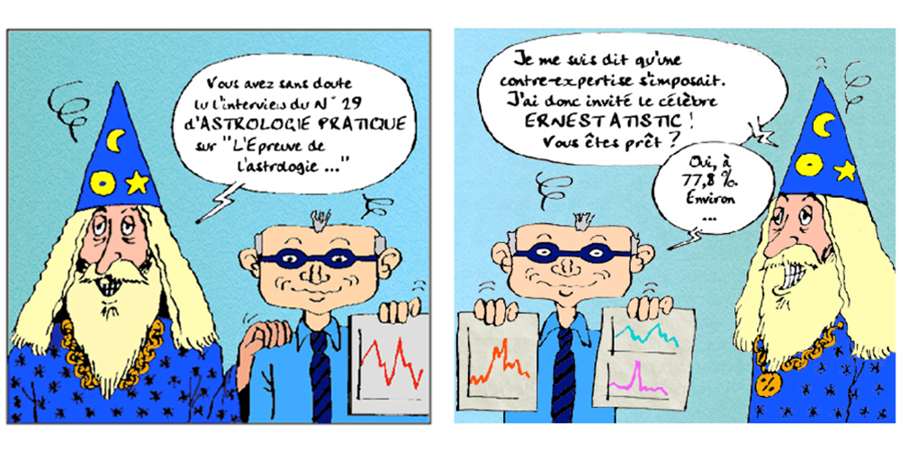
Is the statistician approach that has just been described really adapted to the astrological object? Nothing is less certain, and this for at least two reasons.
▶ The first, which is not the main one, is that it is based exclusively on the study of an element (a Planet or a Sign) arbitrarily isolated from the set to which it belongs in order to study its possible properties. and specific characteristics. This set is the global and organized configuration of planetary and zodiacal factors in a given place and time: the horoscope or sky of birth. And if this isolated element has its own characteristics, a significant part of its properties results from its particular position within this set, which an isolationist approach like the one described above does not make it possible to apprehend.
▶ The second reason is more fundamental: the astrological fact is located at the crossroads of a set of extra-astrological variables (time, natural environment, heredity, sex, intellectual level, socio-culture, education, etc.) which determine and modulate to a large extent the modalities of its expression. The complex, subtle and multifactorial nature of the expression of the astrological fact at the heart of this bundle of variables makes it conjectural, more qualitative than quantitative, and makes it escape the simple and linear causalities as much as mechanical determinisms, as well as more quantitative than qualitative measures of simplistic and reductive statistics unable to apprehend its chaotic and stochastic (random). From this point of view, the choice of occupation as a criterion for discrimination is particularly simplistic.
We will return later to the many criticisms that can be leveled at the astrological statistics produced by the Gauquelin couple. For the moment let us content ourselves with pointing out that the correlations between the jupiterian positions in the local sphere and the data concerning well-known comedians were positive and significant, as were the correlations between the saturnian positions and the members of the scientific academies or those of the marsian positions and the great sports champions. Let us note in passing for the record that Michel Gauquelin did not begin his statistical research by studying the possible influence of Jupiter on actors, but by that of Saturn, then of Mars, a planet for which he also obtained positive results: it was indeed these results that would be the source of the important pseudo-scientific controversy that would later be known as the “Mars effect”.
If he goes a little further to understand the reason for this difference between Mars, Jupiter and Saturn, the statistician will be able to embark on new research, for example based on the frequency of words qualifying actors and scientists in the biographical documents devoted to them. This is what the Gauquelin couple did and, this calculation carried out, they realized that the occurrences are very different for one and the other, the vocabulary used to evoke the first, more frequently jupiterian, using more frequently terms relating to exteriority and the sense of spectacle, whereas for the latter, more saturnian, it is more a question of interiority and a taste for reflection. The Gauquelins then began to come very close to the meanings attributed by astrology to Jupiter and Saturn and to think that there was perhaps an eel under rock. Of course, these correlations were always based only on the calculation of probabilities… and nothing more than occupations. But they still discovered that there were scientists “jupiterian” who have a sense of showmanship and comedians “saturnians” introverted, and that these characteristics appeared in the statistical treatment of the data concerning these two groups.
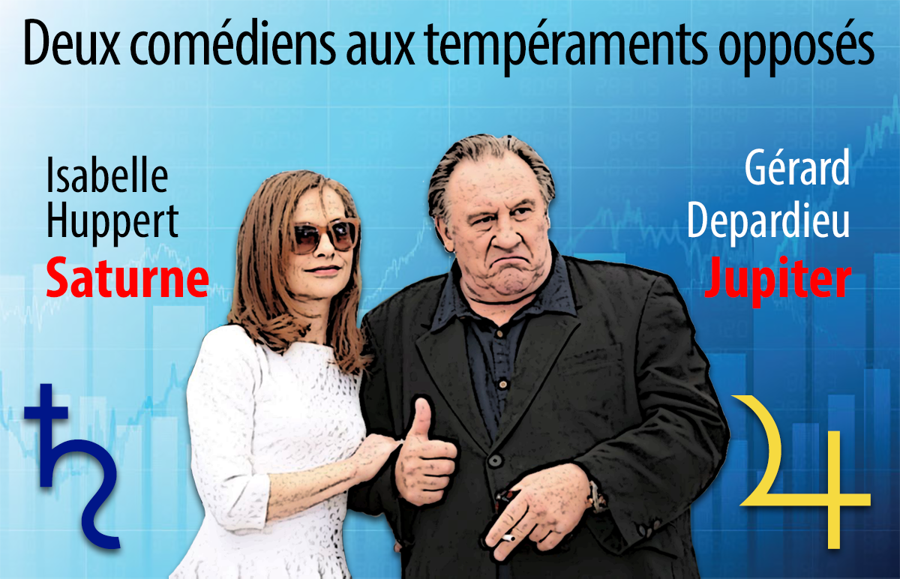
Statisticians of a completely different stature than the Gauquelins would then have felt ripe to embark on new paths, selecting other professional groups and seeking whether or not there are positive correlations between them and Jupiter, Saturn … and the other planets of course, because they would have understood that it was necessary to take into account all the horoscopes, and not only a few of its elements taken in isolation. Rich in their already acquired knowledge, they would have taken the opportunity to go through as many biographies of known characters as possible (it is impossible with strangers) to calculate the frequency of the words that describe them and draw probabilities as to their planetary angularities. Noting that there were probably significant correlations each time, they would have decided to go even further and to include in their frequency parameters heredity, race, sex, culture, education, level intellectual, social, economic, etc., and their impact on the fact of exercising such and such a profession and of being known or unknown, etc. These statisticians would then have arrived at a mass of data of unmanageable complexity by the sole means of probability statistics.
But it should be noted that a systematic and progressive statistical study as described in the preceding paragraphs has never been carried out. The few amateur or professional statisticians, competent and rigorous or not, tendentious or not (that counts!), anti-astrology (most) or pro-astrology (a tiny minority) who embarked on this adventure are never remained only at its premises. Whether they are pro or anti, all have based themselves on absolute, unconditional astrological assertions, to demonstrate their effectiveness or inanity. None was based on the conditional, relative character of astrological influences by situating them within the extra-astrological framework within which they are exercised and which modulates their expression.
In summary: the statistics, favorable or unfavorable to astrology, concerned only certain planets and the Sun signs and/or Ascendant of the zodiac, taken as absolutes, on certain professions and some schematic and partial individual or collective character traits. And despite the coarseness of this simplistic and reductive sieve, some of these studies still found significant correlations, which is almost miraculous given the data, methods and techniques selected to obtain these results. But this is by no means a miracle. It is simply because the astrological Pisces, despite being very small (these are tenuous but tenacious, subtle but powerful influences), are so real, numerous and moving that some of them they were nevertheless fished with the meshes of a statistical net not adapted to their size.
To detect subtle signals, it is better to use subtle instruments. Statistics is not one. But well conducted and based on more relevant premises and methods adapted to the complexity of its object, it could nevertheless one day, not prove astrology (statistics do not prove anything, it is not their usefulness nor their purpose), but demonstrate the very high probability of planetary effects. Effects including Gauquelin statistics only validated a tiny part. The appearance of IT now makes it possible to process very large amounts of data and to cross-reference groups of data of different types. This multifactorial and multidimensional analysis could make possible statistics based on a conditional, relativistic approach to astrology. You still have to want it and have the power. It wouldn’t be nothing, but we’re not there yet. We are even very far from it since almost all of those who have the technical and financial means to carry out such studies are anti-astrology scientists whose a priori primary, sectarian and/or in bad faith encourage them to invent simplistic experimental protocols that are unsuited to what they thus claim to blindly demolish: astrology.
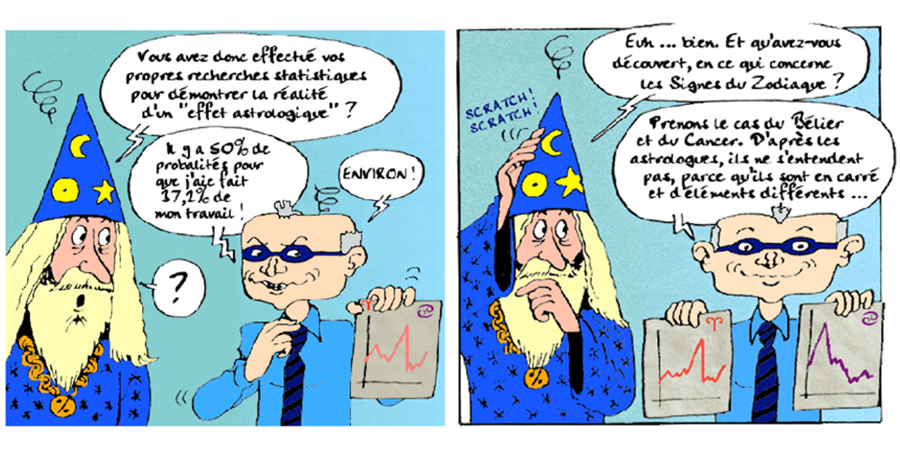
To end this section, let us point out that two main currents of thought clash within the world of statistical science.
▶ The frequentist current. For its proponents, probabilities only serve to provide a model a posteriori standardizing the distribution of frequencies over large quantities and over the long term. We therefore give ourselves a preliminary hypothesis of the object we want to test, we take any or all of the data concerning it, we pass them through the frequentist mill and we try, if possible, to identify probabilities showing or not random laws at the end of this process. This current is also called “objectivist” to the extent that if laws emerge from this organized chaos, they do “objectively”, all by themselves, like grown-ups, independently of any prior modeling. They are then considered as elements of a nature theory, and not a knowledge theory. This is the model “zero a priori theoretical model” which has so far been used, with mixed success.
▶ The Bayesian current. It takes its name from that of Thomas Bayes, mathematician and Anglican pastor of the 18th century that imagined the theorem that defines it. Its representatives believe that statistical data alone cannot lead to emerging laws a posteriori of the probabilistic treatment of the distribution of frequencies, and that it is therefore necessary to initially propose a general form of model which will then have to be confirmed, refined, modified or invalidated. This current is also called “subjectivist” insofar as he considers that it can be determined a priori probabilities from observations resulting from experience given by the frequencies and even also by the parameters relating to these probabilities, these no longer measuring, ultimately, anything but the degree of confidence that can be placed in the forecast.
Translation regarding astrology: we are based, for example, on the rational theories developed by conditionalist astrology to which we attribute, because of the frequency model they propose and the observations resulting from the experience that result from it, subjective probabilities (therefore to which we have “reasons to believe” as Condorcet said when speaking of the paradigm a priori guiding research), which means that this time the calculation of probabilities confirming or invalidating these theories will not be a matter of a nature theory, but of a knowledge theory. In other words, if these conditionalist theories are relevant, the theoretically derived probabilities should be confirmed by running the data through the statistical mill. This is of course the royal road to approach the astrological reality.
True to their beliefs, frequentist statisticians who have tried to disprove astrology set themselves an arbitrary assumption (“the astrology is bullshit”) and a method ad hoc to demonstrate it by only then processing the frequencies resulting from the data that they chose, being more or less sure that the probabilities which would emerge from it would confirm the said hypothesis, since there was no question for them of postulating another one. They were like this a priori some, from the depths of their lack of a theory of knowledge, that a new element of the theory of nature would not emerge. It is a kind of villainous false bayesism. Anti-astrologism is definitely not a science.
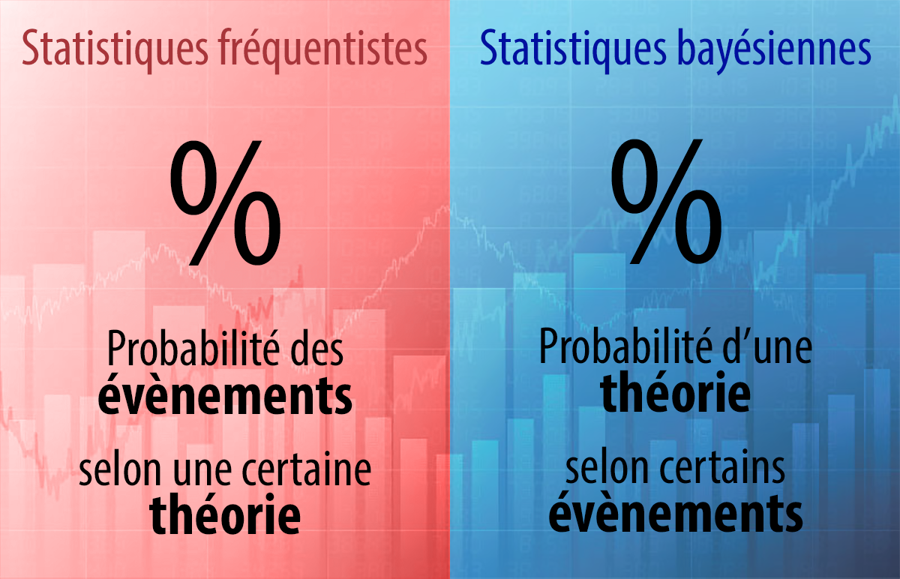
Honestly conducted astrological statistics according to the Bayesian method would give quite different results. This method makes it possible to model the results expected at the start of the process, with reference to a strong theory which we perceive to be rich in probabilities that will have to be statistically explored by processing the data. As statistical observations are made, it is possible to give this theory an increasingly weak weight or to correct it progressively if necessary as the accumulation and processing of data progresses (for example). first the planetary angularities, then the Aspects, then the signs, etc.) and the crossing of these with other extra-astrological data. Once all this data has been taken into account, the work is done on its own, without fiddly human intervention as in conventional statistics: the hypotheses least validated by the processing of the data at the time are automatically eliminated. Don’t ask yourself why Bayesian statistics are the queens of anti-spam software of your e-mail boxes: they allow a constant refinement of the selection criteria.
What you also need to know and what interests us here in the first place, is that frequentist and Bayesian probabilities, despite the antagonistic philosophies that differentiate them, give the same results on very large numbers of data and on very large groups, which involve a very high scale of repetitions. If we want to deal with smaller numbers of data and smaller groups, frequentist statistics prove to be deficient. Bayesian then take over and demonstrate all their usefulness and efficiency in this area of low occurrences and rare or very random repetitions. In this sense, correctly conducted frequentist astrological statistics (i.e. without a priori) can only reveal collective probabilities, whereas Bayesian statistics, which are more subtle and more intuitive, would be more effective in detecting individualized probabilities… and therefore in dealing as closely as possible with the problems inherent in Natal Charts individuals or small groups of individuals. We would thus be very close to artificial intelligence…
You have understood it: the future of research in astrological statistics goes through the Bayesian way, because this way is in fundamental adequacy with the theories and practices of conditionalist astrology which apprehend multifactorial complexity better than others, conjectural and stochastic of the astrological fact. The Bayesian conception of probabilities indeed allows the evaluation a priori of an unknown event, that it has passed into the future, which is in accordance with predictions based on planetary cycles and intercycles. It further infuriates die-hard scientists, that is to say the declared enemies of astrology, by postulating the possibility of “prior probabilities”, which are often hypotheses formulated by experienced experts in a field of knowledge (here astrology…) on whose intuition we can count.
It goes without saying that this type of Bayesian statistical research is only possible if the model a priori that we propose to test is structured, coherent, homogeneous. Otherwise, Bayesian or not, the data mill will only extract from the possible frequencies disjointed, incoherent, heterogeneous probabilities, in short unusable both from the point of view of the theory of knowledge and that of nature. Classical astro-symbolism, devoid of any theory except that of Four Elements long obsolete and always erroneous, and powerless to conceive of a Chart as an organized and hierarchical whole, can only fail before this kind of test. It is not the same for conditionalist astrology, which has theories, methods and protocols of organization and hierarchy clear, easily modeled, quantifiable and therefore transposable in the world of computer programming.
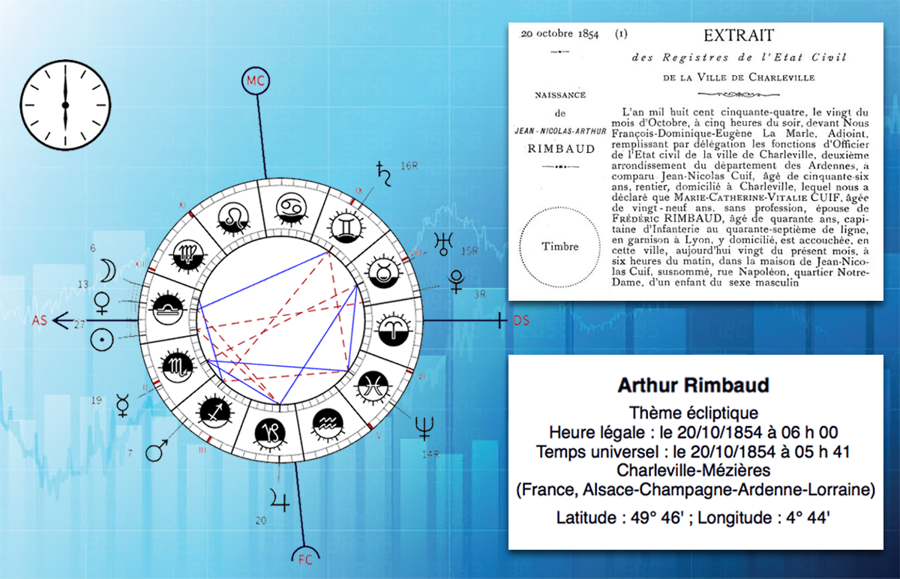
Astrological statistics are based on the mathematical exploitation of databases gathering natal coordinates (date, time, place). Dates and places can be found in biographical dictionaries, professional, school or other directories, or even in computerized databases that collect the natal details of individuals carrying out notable activities in various fields. The hours of birth must be systematically requested from the services of the Civil Registry, which issues birth certificates to all applicants. France has the historical privilege of having an extremely reliable and rigorous Civil Registry, which explains why it is in this country that the most numerous and most reliable astro-statistical experiments have been conducted.
We must insist on an important fact: the sources of the data must be as objective as possible, which means that they must be completely independent of the astrological hypothesis that the frequentist statistician proposes to test. As far as possible, it is preferable that he himself is not the one who collected this data, so as not to lend the flank to anti-astrologers always ready to look for an angle of attack to criticize, devalue or deny the results obtained. Here, it would be the accusation of subjectivity, bias which consists in consciously or unconsciously selecting data whose exploitation would inevitably confirm an initial pro-astrology hypothesis. You should also know that the same anti-astrology scientists are much less finicky when these data aim to invalidate the existence of the astrological fact.
The exploitation of a specific data source relating to a specific field must be done in a complete and systematic way: all the elements which compose it must without exception be treated after the accuracy of each of them has been carefully checked. It is possible to divide a database into several sections, provided that the selection criteria justifying this division are notified as clearly as possible, and that the populations of these sections are sufficiently numerous for their statistical treatment to remain valid.
All these conditions having been met, when a hypothesis has been tested and has produced results that confirm or invalidate it, the same experiment must be repeated several times, each time relying on new sources of data. objectives relating to similar populations in order to ensure that the first results obtained were not due to chance, even if this seemed to be excluded given the magnitude of the probabilities obtained. This procedure also makes it possible to accumulate databases that can be used by other researchers and for other investigations. Anti-astrology scientist statisticians being particularly quibbling, bad faith, hostile and suspicious, one can never be too careful.
Serious pro or anti-astrology astro-statisticians must also integrate into their calculations the frequencies specific to astronomical cycles and to secular, annual and daily demographic trends, the two phenomena being the subject of strong periodic irregularities likely to distort the results if one did not take them into account.
Regarding the astronomical cycles, it is necessary to take into account:
▶ the effect of retrogradations: the count of planetary positions in the Signs of the zodiac shows strong irregularities, since the planets have about three times as many positions in the Signs where they perform their retrogradations, which are moreover irregularly shifted from one year to another. This phenomenon acts directly on the frequencies and the theoretical averages of the twelve Signs, and risks distorting the results if it is not taken into account.
▶ the effect of the scrolling speed of the Signs on the horizon, which is due to the inclination of the Earth on its orbit and to its self-gyration on its oscillating axis and which is variable according to geographical latitude. We thus distinguish for the average terrestrial latitudes the group of Signs of long ascension, from 0° Cancer to 0° Capricorn, which have the longest durations of presence in the Ascendant, and that of the Signs of short ascension, 0° Capricorn in 0° Cancer, which have the shortest durations of presence on the Ascendant, each Sign belonging to one of these groups having its own duration so that its 30° pass successively through the point of their rising. By imagining that the number of births is evenly distributed over all hours of the day (which is actually not the case), this means for example that there is theoretically twice as much probability of having Libra Ascendants than Aries Ascendants.
▶ the real positions of the planets in Signs. Planetary positions are usually defined by their projection on the ecliptic plane, which is the apparent orbit of the Sun around the Earth. However, the planetary orbits are all more or less inclined to this plane. The positive or negative height of a planet on the ecliptic is called its ecliptic latitude. This modifies its diurnal-nocturnal rhythm and consequently may imply that the planet has a zodiacal rhythm other than that defined by the Sign in which it is located according to its ecliptic longitude.
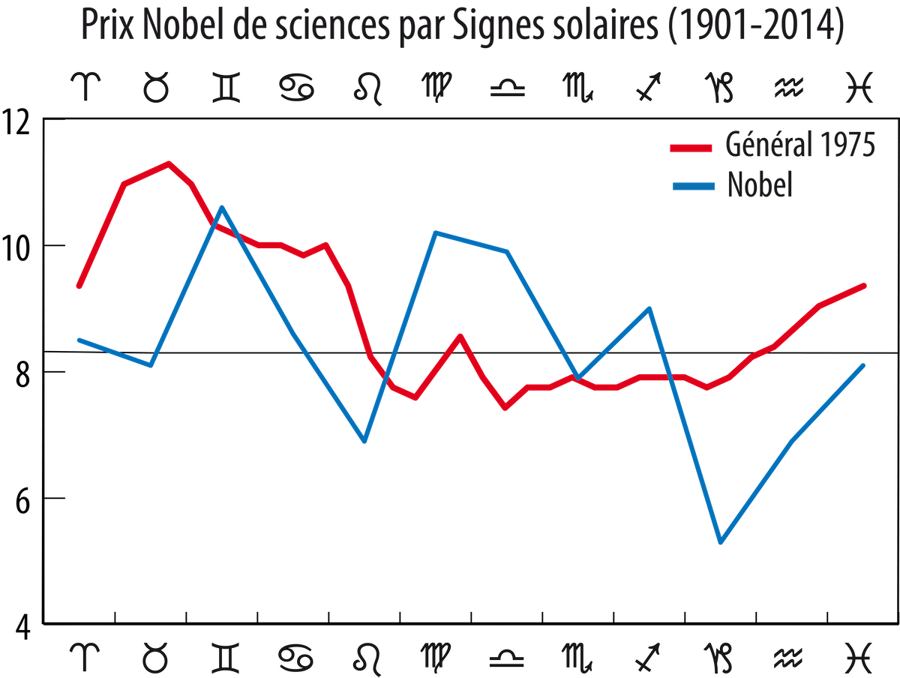
The diagram above illustrates the raw result of the favorite study of anti-astrology statisticians, since it concerns only the distribution (in blue) of Sun Signs in the cohort of Nobel Prize winners in science between 1901 and 2014, here compared to the annual distribution of births by Signs in metropolitan France in 1975 (in red). The over-representation of Virgo and Libra and the under-representation of Taurus and Capricorn relative to this benchmark mean nothing on their own. They constitute strong deviations from a theoretical average, the cause of which must be elucidated in order to determine whether it is of an astrological or other nature. The whole must be the subject of an appropriate statistical treatment before it is possible to conclude, either at any artefact, or at a positive or negative significance for the correlation between the frequency of the Sun signs and the Nobel Prize.
▶ the actual positions of the planets in the local sphere. This implies selecting a housing system compatible with this reality. The current representation of horoscopes is indeed based on the projection of planetary positions on the ecliptic, which only gives them a flat view, in two dimensions. The real has three dimensions and, as we have seen above, only taking into account the ecliptic latitudes of the planets, thanks to the House chart, allows a realistic representation of their positions relative to the horizon and the meridian, and therefore in the sectors that divide the local sphere (the 12 Houses).
▶ the frequencies of the planetary Aspects. These depend on the durations of their respective intercycles. The Aspects between fast planets (from Moon to Mars included) change much faster than those from slow planets (from Jupiter to Pluto). The Aspects between the slowest (Uranus, Neptune, Pluto) can mark an entire generation and therefore be found identically in the horoscopes of all the individuals who are part of it. The problem does not arise if we have a method for prioritizing all the Aspects at the start: we can then deal with this particularity in a Bayesian mode. The Gauquelins used, as for all the other elements they tested, frequentist statistics unsuited to this object.
▶ the actual positions of the planets in the local sphere. It is possible to test different house systems, which induce for the 12 Houses different extents. The system that best accounts for astronomical reality is that of Ptolemy, later attributed to Placidus because the latter made easily usable tables of them. It is characterized by the equal tripartition in duration of each of the diurnal and nocturnal semi-arcs, provided that the planets are located correctly and as precisely as possible in these sectors by calculating their positions in domitude, that is to say by taking into account their ecliptic latitudes. This is the method used by the Gauquelins.
▶ for the study of the meanings attributed to the 12 Houses, it is obviously necessary to preserve the traditional division of the local sphere into 12 sectors. But if we want to study more precisely the distribution of planetary positions in the local sphere, it is possible to divide it into 18, 24 or 36 sectors. In this case, the study will no longer focus on the meanings of the Houses, but on that, if any, of these 18, 24 or 36 sectors. This method can be particularly useful for evaluating the impact and significance of the presence of planets in the sectors contiguous to the horizontal plane (Ascendant-Descendant axis of sunrises and sunsets) and to the meridian plane (Midheaven-Background axis of the upper and lower culminations).
Here we have made the rounds of the elements concerning astronomical frequencies. But these are not the only ones that must be taken into account to avoid falling into statistical traps. Indeed, these astronomical frequencies are located within other frequencies, demographic and geographical.
▶ Frequency of births during the day. Until the middle of the 20th century, parturients followed natural rhythms, and most births occurred between midnight and 06:00 in the morning. When deliveries began to occur massively in hospitals and were medicalized, these rhythms changed, the curve of births having then tended to be more uniform. There is also a clear difference between the frequencies of births depending on whether they occur at home, in public hospitals and especially in private maternities. In these, induced deliveries are more frequent and these frequencies are then particularly high between 10:00 and 12:00 and in the middle of the afternoon, which corresponds to the peaks of professional activity of doctors. Failure to take these frequencies into account can lead to erroneous statistical conclusions. Indeed, they induce an overvaluation or an undervaluation of certain frequencies of the planets in the Houses which has nothing astrological. It is therefore necessary to calculate the incidence of these phenomena on the theoretical frequencies.
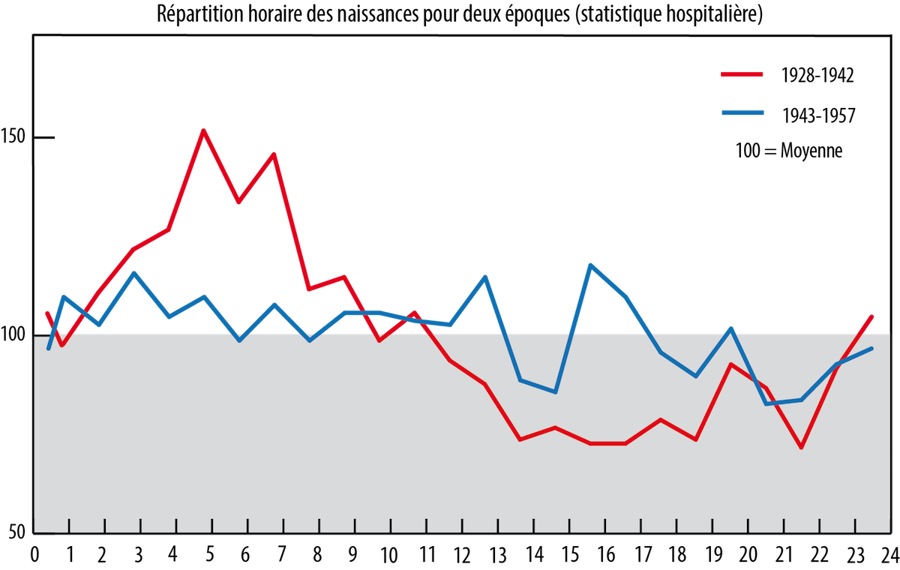
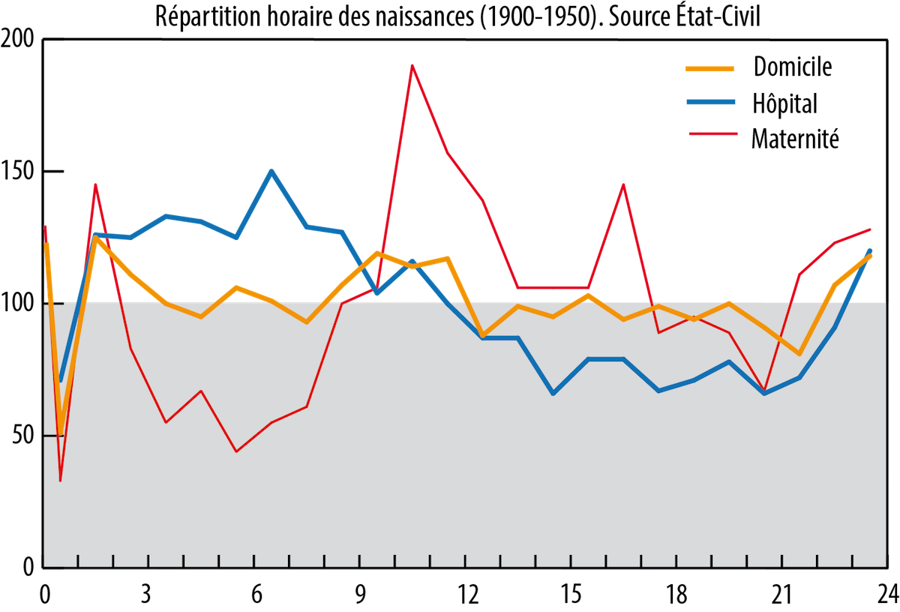
▶ Frequency of births per year. It is essential to take it into account if you want to study the Sun Signs, but also the Signs in which Mercury and Venus are located, which are never very far from the Sun Signs. The distribution of births for the 12 Signs is indeed characterized by very strong inequalities. Until around the 1970s and in metropolitan France, there was a peak in births when the Sun passed through Aries and Taurus (April-May) and a minimum in Libra. The high spring birth rates were explained by the fact that many parents preferred to see their newborns escape the cold and winter illnesses. There was also a strange little peak in births under the Sun in Virgo: nine months earlier, these babies had been conceived between Christmas and New Year’s Eve, a period of many sexual outbursts. Since the 1970s, birth frequencies have gradually approached their theoretical average. The peak of births in Aries and Taurus has completely disappeared following the progress of medicine. The peak of those in Virgo has on the other hand been accentuated, and would be explained by the combined effect of the accentuation of the relaxations during the end-of-year celebrations and the habit taken by some to extend the summer holidays. been in August through September maternity leave.
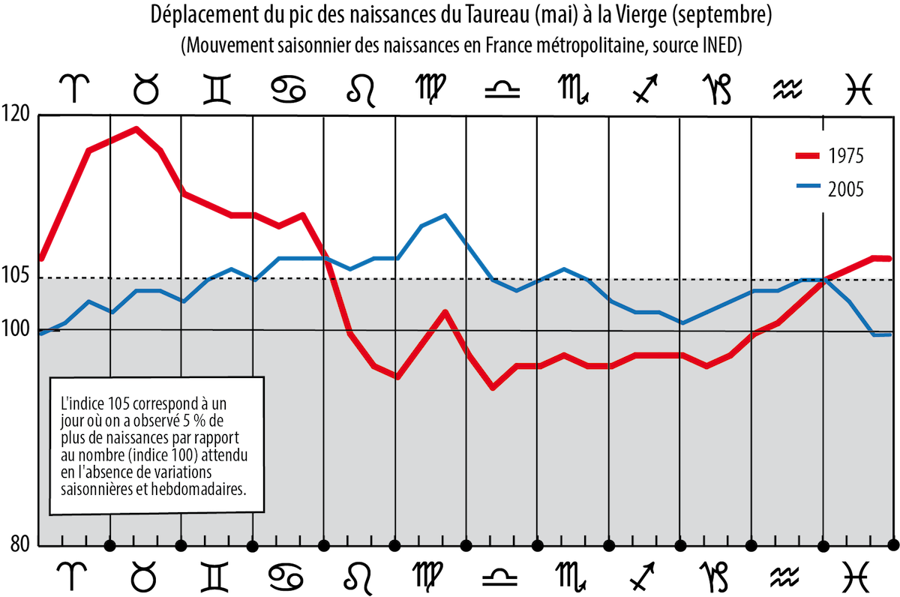
You should therefore know that in metropolitan France there are more individuals born under the signs of Aries, Taurus, Gemini and Cancer if they were born in the 20th century, and under the Sign of the Virgo if they were born in the 21st century, so as not to draw astrological conclusions from their overrepresentation in certain professions, if we take the profession, for example, as a hypothesis to be tested. This annual frequency of births varies according to terrestrial latitudes: in very cold northern countries, births are less numerous in winter than in summer, whereas in tropical countries, high temperatures have the effect of reducing the frequency of births. births. These frequencies also vary according to the rate of medicalization and urbanization of different countries, etc. Finally, very deadly wars and epidemics of contagious and deadly diseases also influence the frequency of births. None of these parameters should be neglected before undertaking statistical studies on the frequencies of the Sun Signs.
All of these parameters having been synthesized and taken into account, a final step remains to be taken: that of the analysis and classification of the astrological assertions concerning Signs, planets, Aspects and Houses. By referring to the writings of many astrologers among those who are supposed to be authorities on the subject, we note the words, names or adjectives, which are most frequently attached to a Sign, a planet, an Aspect or a House. These linguistic frequencies having been established, all that remains is to verify statistically whether the behavioral characteristics of the individuals or groups of individuals studied correspond to the descriptions given by the synthetic compilation of astrological writings.
This is undoubtedly the most delicate step and the one that brings the most to the conscious or unconscious bias, intentional or not, good or bad faith. The central problem lies in the choice of astrologers who are supposed to be authorities in their field. For lack of truly objective criteria, statisticians fall back on the writings of those who are the most published and therefore the most known and recognized by their peers and those who read them. However, this criterion is highly debatable.
In all fields, including that of the various sciences, renowned authors “experts” The best known and most prolific in terms of readily available publications are far from always the most learned and competent. It is the same — and it is even worse — in the field of astrology. The most read and published authors all belong to the arch-dominant current of this knowledge, astro-symbolism, whose lack of rigor and unity, the absence of theoretical foundations, common rules and well-defined practices make possible all the most vague, ambivalent and contradictory assertions. Most of them, which also belong to different “schools” of astrology who oppose and clash on many points of doctrine, only mechanically repeat what others have written or thought before them without bothering to verify that no error had been made by their predecessors. They only agree on one point: all use the ancient and obsolete doctrine of the Four Elements (Fire, Earth, Air, Water) and the ancient and delirious doctrine of planetary Masteries to substantiate their assertions. Finally, we must take into account the fact that the authors of the most widely read astrology works are those who earn the most for their publishers. A huge bonus is immediately given to the most mercantile astrology, which has no other ambition to feed its readers the nonsense they want to consume. Because it should be known that the frequency of imbeciles and ignorant believers among the authors and readers of astrology books is extremely high, which a statistical study could only confirm in terms of probabilities.
Suffice to say that when statisticians claim to source themselves from objective data by calculating the frequencies and occurrences of the vocabulary produced by astrologers “authoritative” on the pretext that they are the best known, they make fun of the world. At best they are seriously mistaken by total ignorance of the knowledge that they intend to pass through the probabilistic mill, which objectively makes them incompetent. At worst they are guilty of subjective bias in the choice of data (a crime among statisticians!), in that they do not clearly state that what they claim to be testing is not astrology per se, but what the least qualified astrologers have written about it. A modicum of intellectual honesty on their part would require doing separate research to astro-symbolism ultra-dominant and astro-conditionalism ultra-minority.
Goes further to the limit that English-speaking anti-astrology statisticians may be unaware of the existence of astro-conditionalism, which has not yet made any publications in English, and that therefore they do not have the idea of test, even if a real researcher must always have the curiosity to seek and deepen the subject he claims to study, even in a language other than his native language (which is why English-speaking anti-astrology statisticians, who are vast majority, are not real researchers, by the way). But this is unforgivable and indicative of a manifest subjectivity bias on the part of French-speaking astro-statisticians.
In summary, of this brief overview of the words and evils of “mainstream” astrology, it appears that the sources of lexical and linguistic data that statisticians use are absolutely not “objectives”. They are not because they make no difference between “scholarly” astrology and popular-mercantile astrology by amalgamating the writings produced by one and the other in the dictionaries of meanings which serve as their databases. They are not either by retaining only the astro-symbolist literature to constitute them. Their ignorance of these differences, real or feigned, is by no means an excuse. By claiming to perform statistics on the real zodiac-planetary influences when their real object is the dominant lexical field in the dominant astrological literature, they are guilty, at best, of flippancy, at worst, of imposture. Anti-astrologism really isn’t a science.
▶ The specific issues of astrological statistics
▶ Tests et prétextes : comment démonter l’astrologie ?
▶ Astrologie canine, astrologie cynique ? À propos d’une expérience statistique sur des chiens
▶ Carlson’s “experiment”: an example of anti-astrologist quackery
▶ The Petiot affair and the “Barnum effect” or the anti-astrologer circus
▶ Le problème des jumeaux en astrologie
▶ Uranus astronomique
▶ Sun-Uranus aspect
▶ Mars-Saturn aspect
▶ Astrologie et astrologies : écoles, courants et chapelles
▶ Results of conditionalist astrology
▶ Results of traditional astrology
▶ Results of statistical astrology
▶ The world according to Claudius Ptolemy, astronomer-astrologer and lighthouse of Alexandria
▶ Ptolemy and the error of the senestrogyrate Houses
▶ Introduction to the comparative results of astrologies
▶ Anar-show en hommage à Paul Feyerabend
▶ Ike Uncyfar and Astro-statistics on video
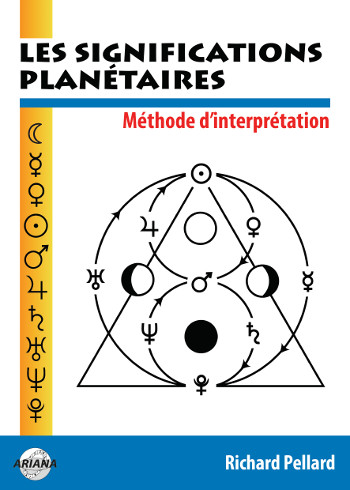
Les significations planétaires
par
620 pages. Illustrations en couleur.
La décision de ne traiter dans ce livre que des significations planétaires ne repose pas sur une sous-estimation du rôle des Signes du zodiaque et des Maisons. Le traditionnel trio Planètes-Zodiaque-Maisons est en effet l’expression d’une structure qui classe ces trois plans selon leur ordre de préséance et dans ce triptyque hiérarchisé, les Planètes occupent le premier rang.
La première partie de ce livre rassemble donc, sous une forme abondamment illustrée de schémas pédagogiques et tableaux explicatifs, une édition originale revue, augmentée et actualisée des textes consacrés aux significations planétaires telles qu’elles ont été définies par l’astrologie conditionaliste et une présentation détaillée des méthodes de hiérarchisation planétaire et d’interprétation accompagnées de nombreux exemples concrets illustrés par des Thèmes de célébrités.
La deuxième partie est consacrée, d’une part à une présentation critique des fondements traditionnels des significations planétaires, d’autre part à une présentation des rapports entre signaux et symboles, astrologie et psychologie. Enfin, la troisième partie présente brièvement les racines astrométriques des significations planétaires… et propose une voie de sortie de l’astrologie pour accéder à une plus vaste dimension noologique et spirituelle qui la prolonge et la contient.
Téléchargez-le dès maintenant dans notre boutique
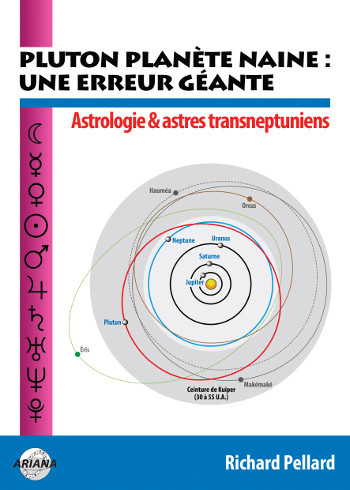
Pluton planète naine : une erreur géante
par
117 pages. Illustrations en couleur.
Pluton ne fait plus partie des planètes majeures de notre système solaire : telle est la décision prise par une infime minorité d’astronomes lors de l’Assemblée Générale de l’Union Astronomique Internationale qui s’est tenue à Prague en août 2006. Elle est reléguée au rang de “planète naine”, au même titre que les nombreux astres découverts au-delà de son orbite.
Ce livre récapitule et analyse en détail le pourquoi et le comment de cette incroyable et irrationnelle décision contestée par de très nombreux astronomes de premier plan. Quelles sont les effets de cette “nanification” de Pluton sur son statut astrologique ? Faut-il remettre en question son influence et ses significations astro-psychologiques qui semblaient avérées depuis sa découverte en 1930 ? Les “plutoniens” ont-ils cessé d’exister depuis cette décision charlatanesque ? Ce livre pose également le problème des astres transplutoniens nouvellement découverts. Quel statut astrologique et quelles influences et significations précises leur accorder ?
Enfin, cet ouvrage propose une vision unitaire du système solaire qui démontre, chiffes et arguments rationnels à l’appui, que Pluton en est toujours un élément essentiel, ce qui est loin d’être le cas pour les autres astres au-delà de son orbite. Après avoir lu ce livre, vous saurez quoi répondre à ceux qui pensent avoir trouvé, avec l’exclusion de Pluton du cortège planétaire traditionnel, un nouvel argument contre l’astrologie !
Téléchargez-le dès maintenant dans notre boutique